9. Amaranthus hybridus L. (Am.) – A rather frequent but usually ephemeral alien. Formerly chiefly recorded as a wool alien in the Vesdre valley, elsewhere most often seen near grain stores.
Amaranthus hybridus belongs to a taxonomically difficult species complex in which species boundaries have long been unclear and therefore controversial. Recent morphological and anatomical studies have considerably changed interspecific relationships (Costea & al. 2001a). This renewed species concept is widely becoming accepted in the New World (see for instance Mosyakin & Robertson 2003) and is preferably adopted for the numerous representatives occurring as ephemeral or naturalised aliens in the Old World as well. Two distinct subspecies are recognised in Belgium and are further treated in detail beneath.
- Tepals of female flowers narrowly-ovate to oblong-lanceolate, acute or subacute at apex, erect, shorter than the utricle or at most as long === subsp. hybridus
- Tepals of female flowers spathulate to obovate, obtuse at apex, more or less erect to outcurved, longer than the utricle (or rarely only as long as utricle) === subsp. quitensis
Subsp. hybridus (incl.: A. patulus BertolA rather common but usually ephemeral alien. Formerly introduced with wool in the Vesdre valley (at least between 1903 and 1963) and cereals, nowadays chiefly associated with cereals. Perhaps first collected near Visé in 1870. Found in various man-made habitats, viz port areas (often in the surroundings of grain mills), road verges, railway banks, wasteland and dumps. Amaranthus hybridus subsp. hybridus is very locally more or less naturalised, for instance since 1982 on a disused railway track in the port of Gent (Verloove 2002, 2006). Possibly overlooked elsewhere. Records of this taxon in maize fields are probably always erroneous and referable to Amaranthus powellii subsp. bouchonii.
Selected literature: Coons (1977), Coons (1978), Weaver & McWilliams (1980), Dirkse & al. (1998), Duistermaat (1999), Costea & al. (2001a), Verloove (2002), Mosyakin & Robertson (2003), Verloove (2006).
Subsp. quitensis (Kunth) Costea et Carretero (syn.: A. quitensis Kunth, A. retroflexus subsp. quitensis (Kunth) O. Bolos et Vigo, A. retroflexus var. quitensis (Kunth) Covas) (S-Am.) – A regular but always ephemeral alien. Formerly chiefly as a wool alien in the Vesdre valley, at least from 1898 (first Belgian record) until 1947. More recently usually associated with grain importation. Most often seen in port areas (especially near grain mills), on dumps, on wasteland or by road verges. Recent records seem to be rather scarce: seen for instance in Roeselare. Most recently seen on rough ground near a grain mill in Roeselare in 2013.
Amaranthus hybridus subsp. quitensis is poorly known in Belgium and many records were previously incorrectly labeled (most frequently confused with A. retroflexus). Confusion is also likely with some of the dioecious species since, at a first glance, inflorescences of this taxon often appear to be entirely male. In western Europe female flowers seem to develop late and mature fruits are rather rarely produced.
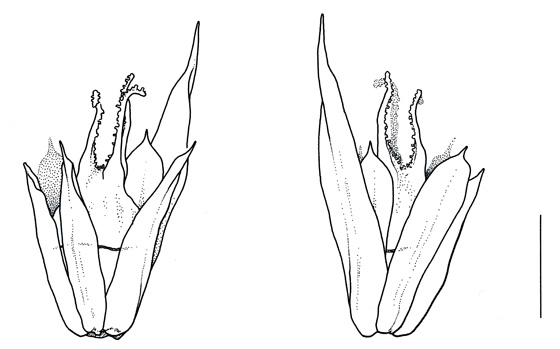 |
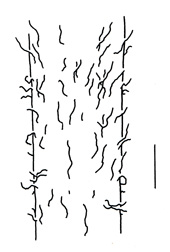 |
 |
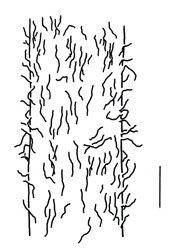 |
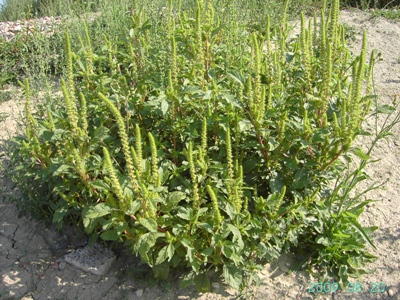 |
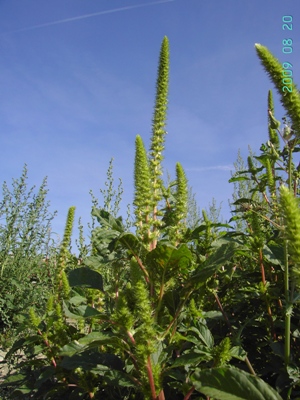 |
 |
Selected literature:
Coons M.P. (1977) The status of Amaranthus hybridus L. in South America. Cienc. Nat. 18(1): 80-87.
Coons M.P. (1978) The status of Amaranthus hybridus L. in South America. part 2: The taxonomic problem. Cienc. Nat. 19(1): 66-71.
Costea M., Sanders A. & Waines G. (2001a) Preliminary results towards a revision of the Amaranthus hybridus species complex (Amaranthaceae). Sida 19(4): 931-974.
Dirkse G.M., Barendse R. & Abbink-Meijerink C.G. (1998) Amaranthus bouchonii Thell. (Franse amarant) en A. hybridus L. (Groene amarant) in Nederland. Gorteria 24: 69-80.
Duistermaat H. (1999) Nogmaals Amaranthus hybridus L. (Groene amarant) en A. bouchonii Thell. (Franse amarant). Gorteria 29: 31-33.
Kloos A.W. Jr. (1949) Dix espèces d’Amaranthus nouvelles pour la flore belge. Bull. Jard. Bot. Etat Brux. 19: 243-250.
Mosyakin S.L. & Robertson K.R. (2003) Amaranthus. In: Flora of North America Editorial Committee (eds.), Flora of North America, vol. 4. Oxford University Press, New York-Oxford: 410-435.
Verloove F. (2002) Ingeburgerde plantensoorten in Vlaanderen. Mededeling van het Instituut voor Natuurbehoud n° 20: 227 p.
Verloove F. (2006) Amaranthus hybridus subsp. bouchonii. In: Van Landuyt W., Hoste I., Vanhecke L., Van den Bremt P., Vercruysse W. & De Beer D., Atlas van de flora van Vlaanderen en het Brussels gewest. Instituut voor Natuur- en Bosonderzoek, Nationale Plantentuin van België en Flo.Wer: 131.
Verloove F. (2006) Amaranthus hybridus subsp. hybridus. In: Van Landuyt W., Hoste I., Vanhecke L., Van den Bremt P., Vercruysse W. & De Beer D., Atlas van de flora van Vlaanderen en het Brussels gewest. Instituut voor Natuur- en Bosonderzoek, Nationale Plantentuin van België en Flo.Wer: 132.
Weaver S.E. & McWilliams E.L. (1980) The biology of Canadian weeds: 44. Amaranthus retroflexus L., A. powellii S. Wats. and A. hybridus L. Canad. J. Pl. Sci. 60: 1215-1234.

